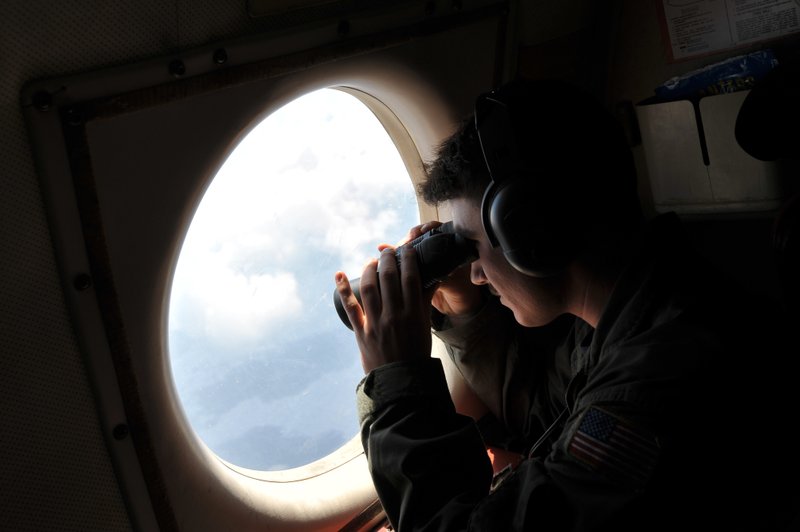CAIRO — A French ship joined the international effort to hunt for the black boxes and other wreckage of EgyptAir Flight 804 Monday, searching for clues to what brought the plane down early Thursday, as Greek and Egyptian authorities diverged on what happened to the plane during the crucial final minutes before it crashed into the Mediterranean, killing all 66 people on board.
Egyptian authorities said they believe terrorism is a more likely explanation than equipment failure, and some aviation experts have said the erratic flight reported by the Greek defense minister suggests a bomb blast or a struggle in the cockpit. But so far, no hard evidence has emerged.
The head of Egypt’s staterun provider of air navigation services, Ehab Azmy, said the plane did not swerve or lose altitude before it disappeared off radar around 2:45 a.m. Egypt time Thursday, challenging an earlier account by Greece’s defense minister.
Azmy, head of the National Air Navigation Services Co., said that in the minutes before the plane disappeared it was flying at its normal altitude of 37,000 feet, according to the radar reading. “That fact degrades what the Greeks are saying about the aircraft suddenly losing altitude before it vanished from radar,” he added.
“There was no turning to the right or left, and it was fine when it entered Egypt’s FIR [flight information region], which took nearly a minute or two before it disappeared,” Azmy said.
According to Greek Defense Minister Panos Kammenos, the plane swerved wildly and dropped to 10,000 feet before it fell off radar.
Greek civil aviation authorities said all appeared fine with the flight until air traffic controllers were to hand it over to their Egyptian counterparts. The pilot did not respond to their calls, and then the plane vanished from radar.
It was not immediately possible to explain the discrepancy between the Greek and Egyptian accounts of the air disaster.
Human remains of the victims arrived at a morgue in the Egyptian capital, Cairo, where forensic experts were to carry out DNA tests, according to the head of EgyptAir, Safwat Masalam.
A security official at the Cairo morgue said family members had arrived at the building to give DNA samples to match with the remains, which included those of a child. He spoke on condition of anonymity because he was not authorized to brief the press.
Egypt, which is sending a submarine to search for the flight recorders, has also refuted earlier reports alleging that search crews had found the plane’s black boxes, which could offer vital clues to what happened in the final minutes of the flight.
Ships and planes from Britain, Cyprus, France, Greece and the United States are taking part in the search for the debris from the aircraft, including the black boxes. Some wreckage has already been recovered.
The French vessel that joined the effort Monday is equipped with sonar that can pick up the underwater “pings” emitted by the recorders. It is specialized in maritime surveillance, and rescue and marine police missions.
The 262-foot ship left its Mediterranean home port of Toulon on Friday with a crew of 90, including two judicial investigators. The search area is roughly halfway between Egypt’s coastal city of Alexandria and the Greek island of Crete, where the water is 8,000 to 10,000 feet deep.
The official website of the Egyptian Aircraft Accident Investigation Directorate, which is affiliated with the Ministry of Civil Aviation, gave details of a 2013 flight in which the plane in question had to make an emergency landing.
It said that the EgyptAir A320 GCC took off from the Cairo airport heading to Istanbul and that when it reached an altitude of 24,000 feet, the pilot noticed that one engine had overheated. A warning message appeared on the screen reading, “engine number 1 stall.” After checking on the best measures to take, the pilot headed back to the Cairo airport where a maintenance engineer inspected the engine, disconnected it, and sent it to be repaired.
There were no injuries, no fire, and no damage to the plane in the 2013 case, the report read.
David Learmount, editor of the authoritative Flightglobal magazine, said, “engine overheat is rare, but it happens.” He said that the pilot can shut down the engine, and aircraft can operate with a single engine.
“I don’t think engine overheat alone has ever caused an aircraft to crash. An engine fire could cause a crash but has not done so in the modern aviation era,” he added.
A Section on 05/24/2016
